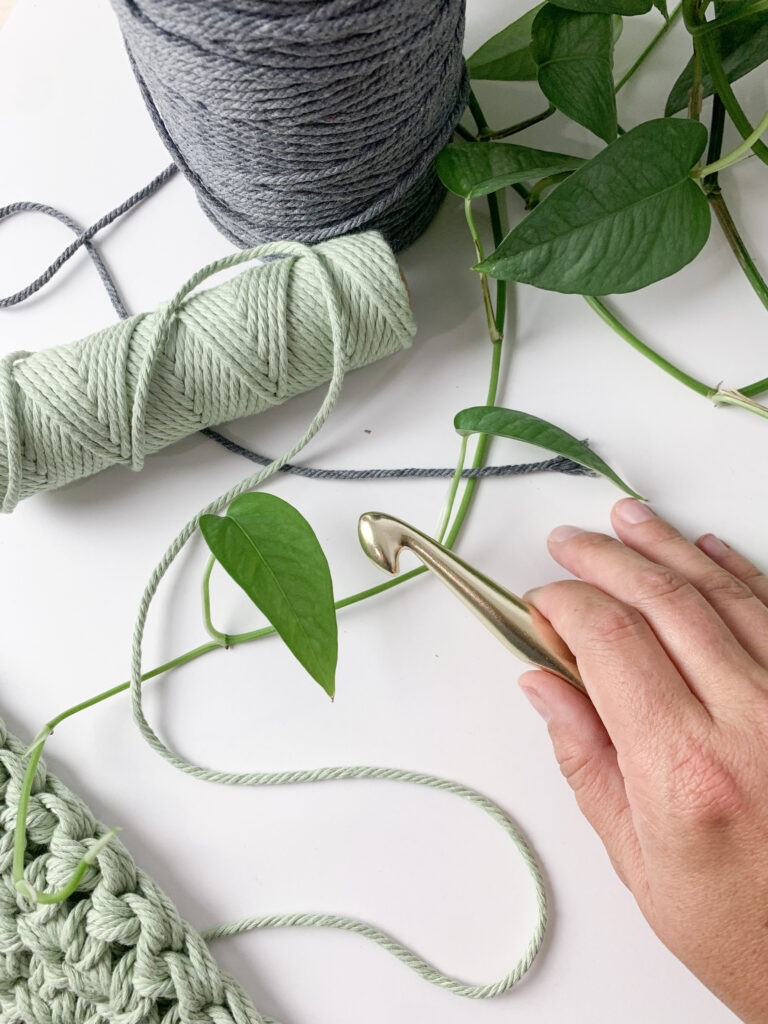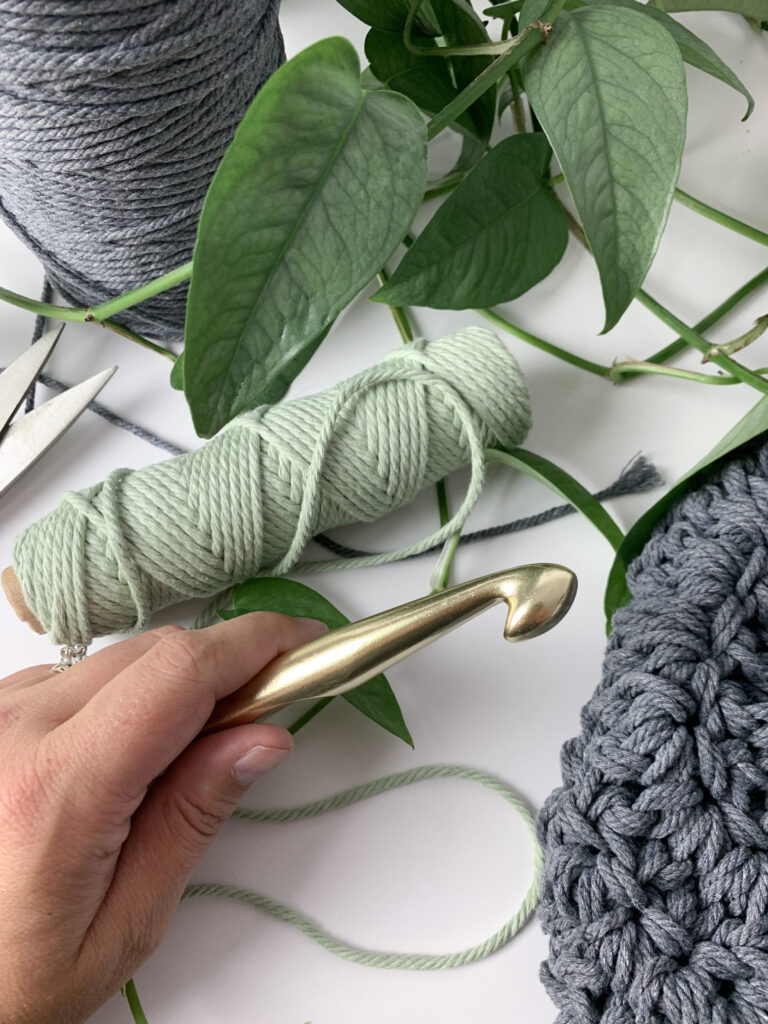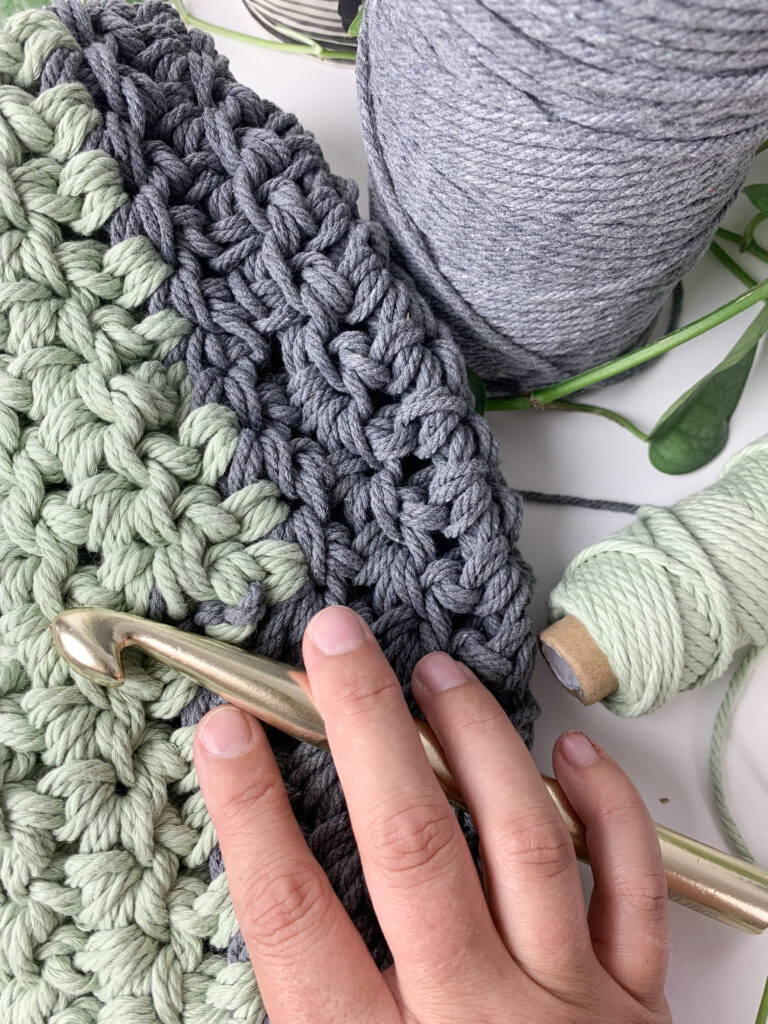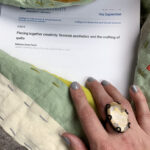
Like many last summer, I was obsessed with images of the British diver Tom Daley knitting at the Tokyo Olympics. I followed his Instagram account, madewithlovebytom, swooning over his Team GB sweater and the adorable pouch he made to protect his gold medal. But one image struck me more than the others.
Shared in Daley’s Instagram Stories, it showed him knitting in the stands of the Tokyo Aquatics Centre while two of his teammates sit in the background staring at their phones. This image stops me, the contrast is so profound, and I screenshot it so I can remember and revisit it later. The image is a visual summation of something I’ve been thinking about a lot lately – that time spent making something is an antidote to time spent mindlessly scrolling. Or to put it another way, if my hands are on something else, they can’t be on my phone.
So much has been written about the way our phones consume our attention and the way they occupy our minds and distract us from the people and experiences around us. But I’m just as apt to recognize the way my phone functions as a tactile fixation. I pick it up when it’s near me because my hands want something to do.
My phone has become such a constant companion that I have a hard time remembering what I did with my hands before I had a smartphone. As a highly tactile person, I seriously doubt I just sat calmly watching TV with my hands in my lap. I suppose I fidgeted. And moments where I don’t have my phone back this up. At the table with my husband’s family after Thanksgiving, with my phone stashed in my pocket, my hands find any small thing in front of me to play with. Bottle caps, a stray spoon, a napkin. In the receiving line at my mother’s funeral, my hands constantly seek out my necklace, anxiously rubbing the chain links until they are shiny. When I read, I do so with a pencil in my hand, ostensibly to take notes, but I often find myself tapping or spinning the pencil between my fingers.
According to Annie Murphy Paul, in her brilliant book The Extended Mind, fidgeting is a natural byproduct of being human. The very act of fidgeting can help us cope with a range of human emotions. “At times we may use small rhythmic movements to calm our anxiety and allow us to focus; at other moments, we may drum our fingers or tap our feet to stave off drowsiness, or toy with an object like a pen or paperclip as we ponder a difficult concept.”
Social media has been criticized for the way it acts like a drug, giving our brains little hits of dopamine so they keep coming back for more. It’s the same effect as playing a slot machine. Just one more pull. And I don’t deny this. But for many of us, it’s more than dopamine hits that keep us coming back. It’s also a tactile fixation that has us reaching for the nearest object to use as a fidget device. And more often than not, the nearest object is our phone.
Michael Karlesky and Katherine Isbister, whose research focuses on the use of fidget objects, note that people often “attach little tassels and charms to their phones, transforming and repurposing these specifically hand-centric devices to be even more kinesthetically inviting.” But they fail to acknowledge the way our phones themselves, particularly apps that involve scrolling and swiping, act as fidget objects, serving as a form of tactile and sensory stimulation, albeit a poor one.
The image of Daley knitting reminds me of when my dad quit smoking. To combat the oral fixation that accompanied his nicotine addiction, he took fast food straws, cut them into the length of cigarettes, and carried them around in his shirt pocket, where his cigarettes used to live. When he felt the need to smoke, he would chew on one of the straws instead. My dad understood that his addiction was not just a chemical reaction in his brain, but a physical compulsion in his body, something his hands and mouth craved.
While I’ve never had to quit smoking, I have been on a mission to reduce the time spent mindlessly scrolling on my phone since reading Cal Newport’s Digital Minimalism and Jenny Odell’s How to Do Nothing in the spring of 2019. This mission has been met with varying degrees of success, including a period of time where I cut my Instagram habit down to a tight 15 minutes a day and wrote an ebook in a month, much of which I drafted on my phone. The biggest thing I’ve noticed in all these attempts is that it’s much easier to not use my phone if it isn’t at arm’s length of where I am sitting. When it’s away from me, I don’t miss it. But when it’s right there, especially when I’m sitting on the couch and not doing much of anything else, I can’t help but reach for it.
One of the arguments against our phones is the way they distract us, pulling us out of the here and now of everyday life. And you could argue that in that image, Daley and his teammates are all equally distracted, not fully engaged in what is happening around them. But there is a lot of downtime at a swim meet, yes even at, especially at, the Olympics. All those commercial breaks and cuts to other sports we see at home represent times where racing or diving isn’t happening, times where, even at arguably the most exciting sporting event in the world, the monotony of a swim meet becomes painful.
It’s impossible to know what those teammates are doing on their phones, but chances are, they were on social media or perhaps playing a game. It’s possible they were using their phones to connect with friends and family back home or making posts for their sponsors that help support their training. There are certainly good things that our phones enable us to do. Either way, I want to resist the temptation to say that knitting is morally superior to time spent on a phone. But I’ve never seen a book or article about the ill social effects of knitting, whereas I’ve got a growing bookshelf of research on the problems of the attention economy and the negative impact too much time on our devices can have on us.
On the contrary, in her book The Power of Kitting, Loretta Napoleoni shares the positive effects of knitting on our brains. These include cross-body coordination, planning, memory, and “processing sensory and visual information.” This last one is particularly strong, as knitting is shown to develop the hippocampus, an essential site of spatial cognitive capabilities that is being rendered obsolete in the age of GPS.
Just like our phones prey on an innate human need to keep our hands active, social media, especially scrolling visual feeds like Instagram, draw on our deep human drive to scan and track. We evolved to constantly survey an ever-changing environment, and while social media is a poor facsimile of that, it still calls to that deep part of our brain. But while the barrage of images on social media has negative effects on our self-esteem, decision making, and often our empathy, knitting has been shown to have positive effects. In one study “among people aged seventy to eighty-nine, knitters and crocheters had the healthiest brains and memories.”
I am not a knitter. I can knit. I’ve even taught knitting in university art courses. But I prefer to crochet. It’s a skill I’ve come back to over and over again throughout the years, and seeing Daley at the Olympics and reading Napoleoni’s book has me reaching for my hook again. I’m hoping, like Daley, this will keep my hands off my phone.

I only recently learned that I’m a slow crocheter. In his Instagram Stories, Daley shared a video clip where he surprised young crochet prodigy Jonah Larson (over Zoom) on The Drew Barrymore Show. Flipping over to Larson’s profile, I found a video of him crocheting while talking to the camera. Not only does he never actually look at his work, his eyes are trained on the camera the entire time, but his hook flies in and out of stitches at a nauseating speed. He is like the Michael Phelps of crocheting and I am well, me if I were to attempt to race Phelps.
As if to prove my point, I turn to the blanket sitting next to me, a work in progress that is nearly a decade in the making. In my defense, I had put the blanket down for several years or more, relegating it to a spare bedroom filled with unfinished projects and clothes I desperately need to get rid of. I had my reasons. As a metalsmith by trade, I am keenly aware that I only have so many movements in my hands and wrists. Repetitive stress injuries are so common in my field that a repetitive hobby seemed like tempting fate.
But so many signs kept drawing me back to crochet (including the fact that constantly scrolling on your phone is also bad for your hands and wrists), and so here we are. Most nights, I slowly work my way through a row or two, or at least a few stitches, if for no other reason than to avoid mindless scrolling while I watch TV.
It’s not just the act of crocheting that serves as a foil to my phone. My crocheted blanket has tactile qualities that my phone cannot provide. Paul writes that “fidgeting can supply us with a range of sensory experiences entirely missing from our arid encounters with screen and keyboard.” There is a texture to a knitted or crocheted blanket that is the opposite of the sleek surface of a phone. There are bumps and lumps and holes (an intentional part of the technique of crochet, not mistakes) for my fingers to explore.
The blanket I’ve been slowly making is now large enough to cover my lap, and so it serves as both a work in progress and a source of warmth and comfort. When I take a break, my hands wander to the loose yarn ends where I have joined two colors together. A more skilled crocheter would have worked these ends in during the process, and my plan was always to cut them off or weave them in later, but now I hesitate. I imagine that even when the blanket is finished, these yarn ends will give my hands something to do. Their presence reminds me of my friend’s child who would constantly play with the tag on a soft toy. This can’t be an isolated impulse, as toymakers now make objects, aimed at infants and toddlers, that are essentially all tags and other textural elements.
Playing with these yarn ends makes me wonder why children get these toys and adults don’t. There is, of course, a stigma around adults using toys. In their research into specific objects that adults use for fidgeting, Karlesky and Isbister mention a woman who uses a wooden children’s toy as a fidget device. She purchased it with that purpose in mind, but under the pretense of buying it for her child. I try and imagine the scenario, likely in a store, where this woman is so ashamed to be buying a toy for herself that she feels the need to tell the person checking her out that she is under no uncertain terms buying this for her child.
On the Tumbler page Karlesky and Isbister created for their fidget research project, which collects images, videos, and stories of the various objects adults use for fidgeting, knitting is mentioned several times. In two entries, it is mentioned in addition to other objects, while one person has shared a picture of knitting in progress and states it is their preferred method of fidgeting.
There is a slight skew to this project, as the initial research was aimed at discovering objects people fidgeted with while doing computer work, and knitting, or crochet for that matter, with its use of both hands, doesn’t lend itself well to even low-level computer work. But while the original aim of their project was to look at the ways fidgeting helps with creativity, calm, and anxiety, Karlesky and Isbister also note how many people identify fidget objects as simply a source of stimulation. It is during our downtime, like sitting at a swim meet, where this lack of simulation becomes the most painful. And it is in these moments that we are most likely to reach for our phones.
Karlesky and Isbister note that anything we fidget with has the potential to be either positive or negative, stating “a brief interlude of fiddling with an object may begin as a moment of helpful self-modulation but translate into self-defeating procrastination time. Similarly, a distraction may begin as a needed break but evolve into a counterproductive tangent.” This is where the pull towards our phones becomes dangerous. With the intentionally addictive nature of the attention economy, a moment of fidgeting quickly becomes an hour or more down the rabbit hole of social media.
Knitting and crocheting, and really any other small portable crafts, have the potential to keep our hands busy without totally pulling us out of ourselves. While I may never be able to crochet at full speed while staring at a camera like Larson, and you’ll probably never catch me crocheting after winning a gold medal, I can sit and crochet while still engaging with the world around me. And perhaps this is the biggest virtue of my slow meandering crochet habit. Unlike my phone, I find it easier to keep tabs on what is happening around me while I’m working, to keep my hands occupied without totally pulling focus from my mind, and, perhaps most importantly, I find it easier to take my hands off my crocheting when the world around me beckons.



Leave a Reply